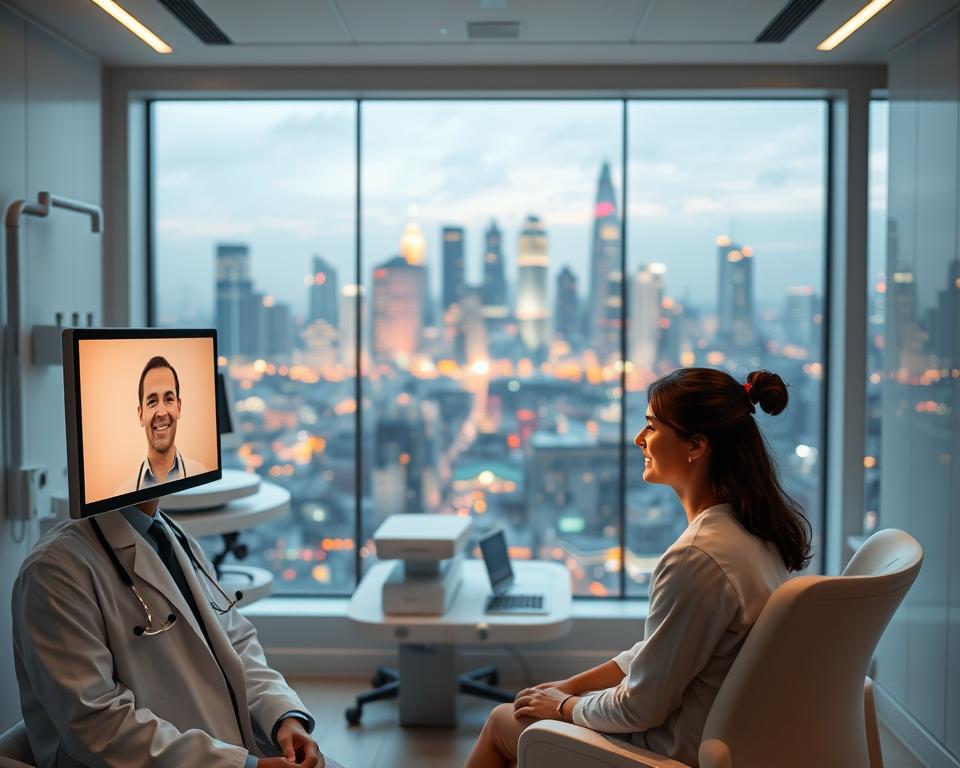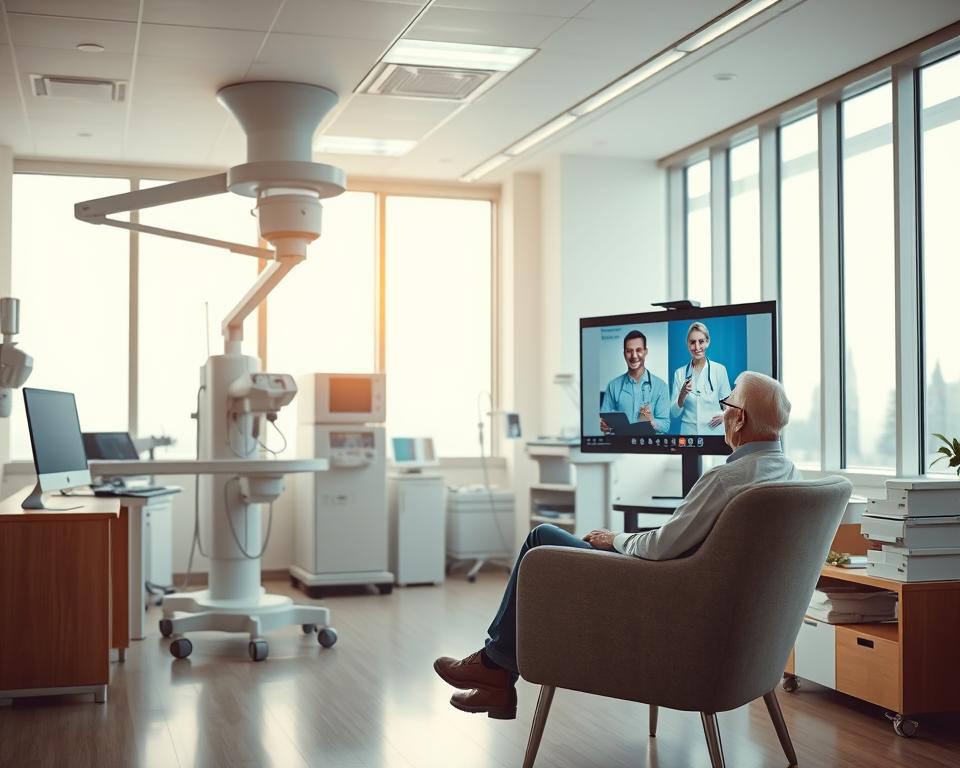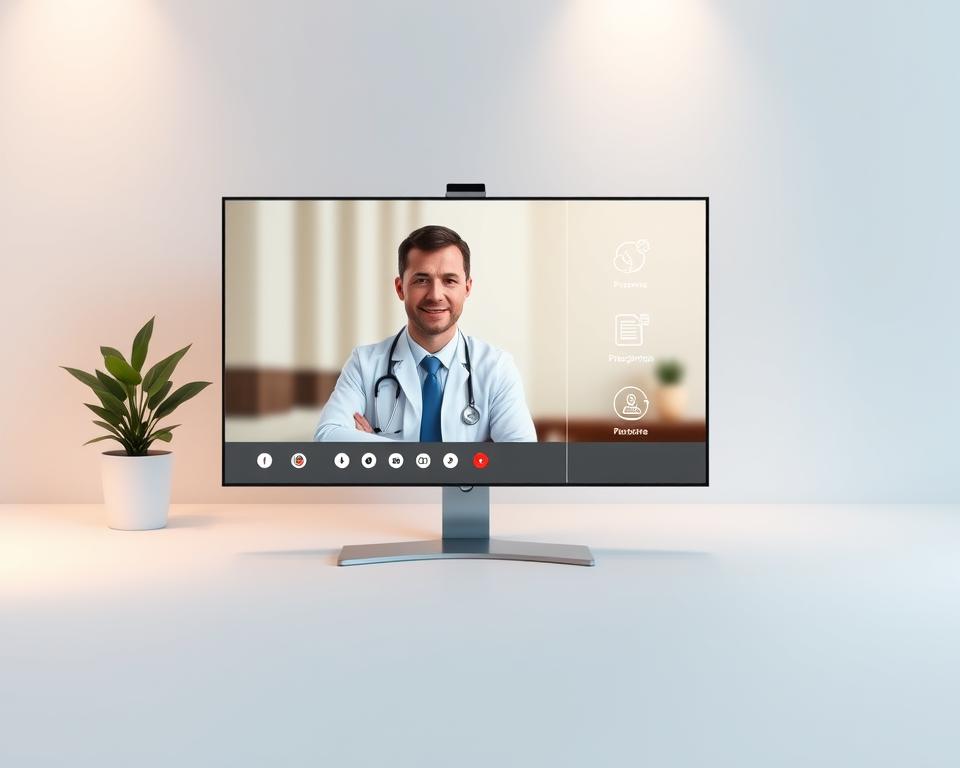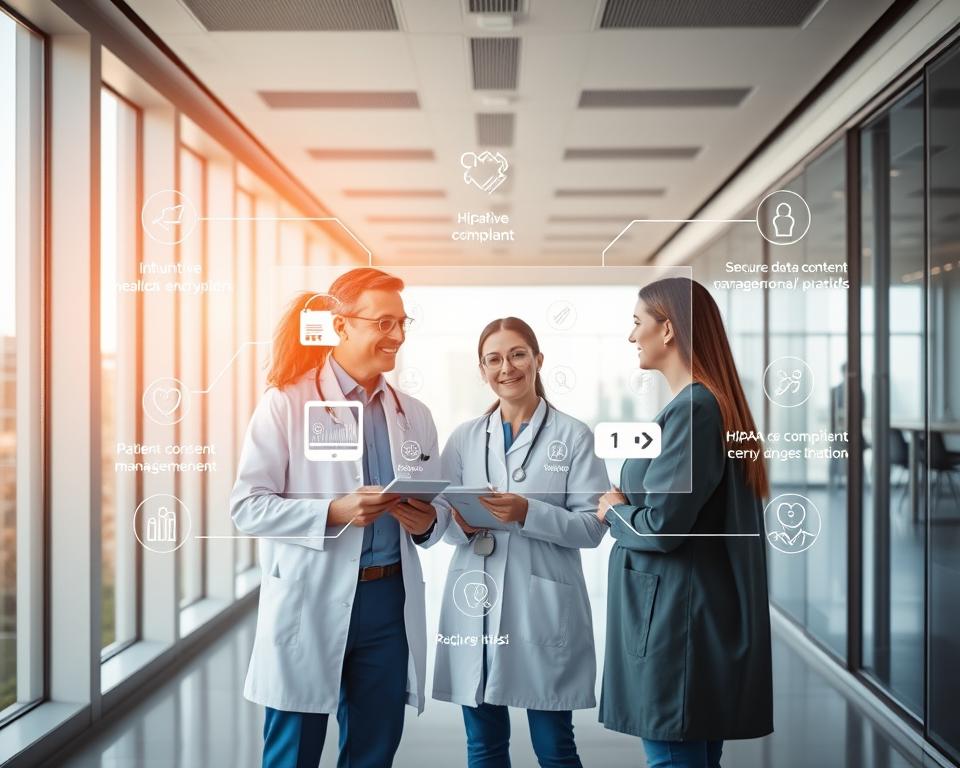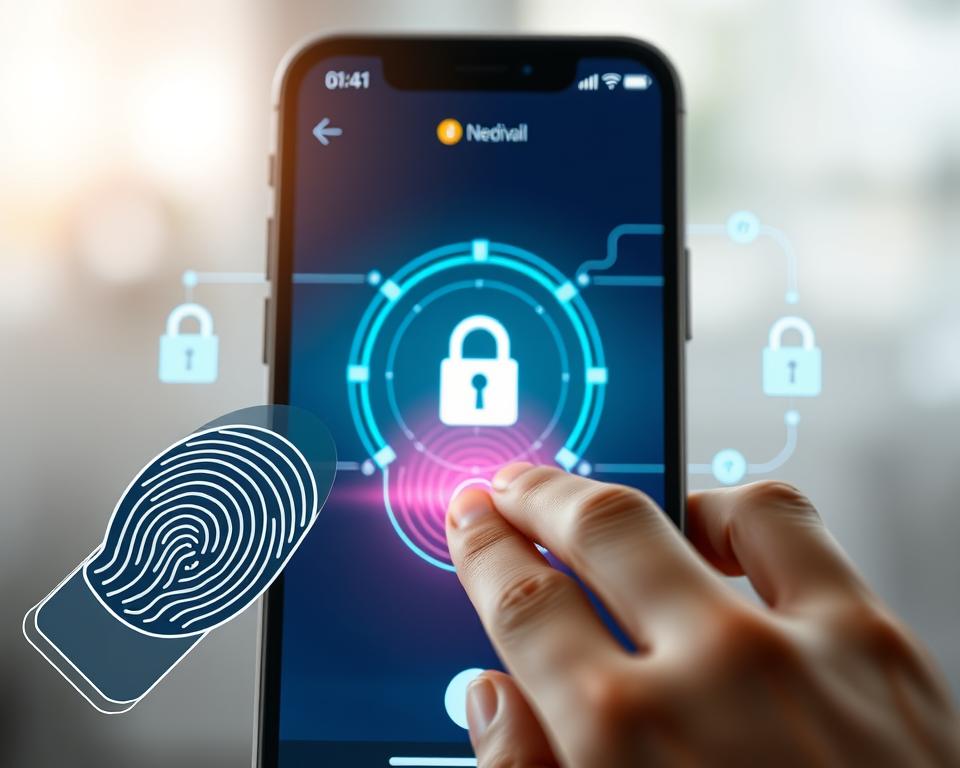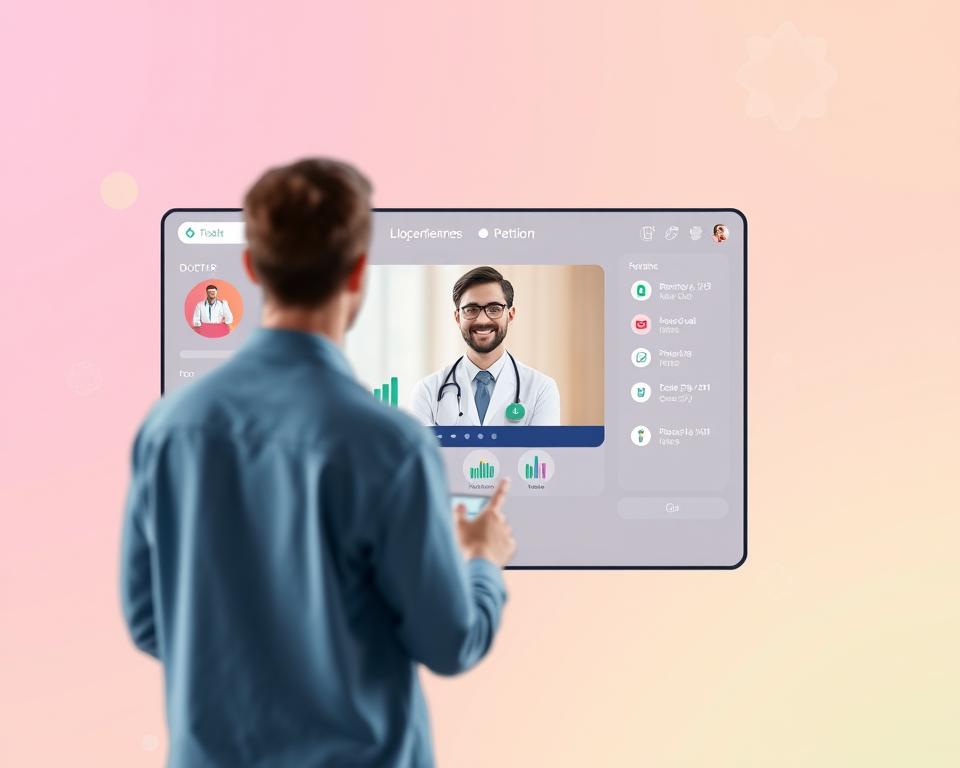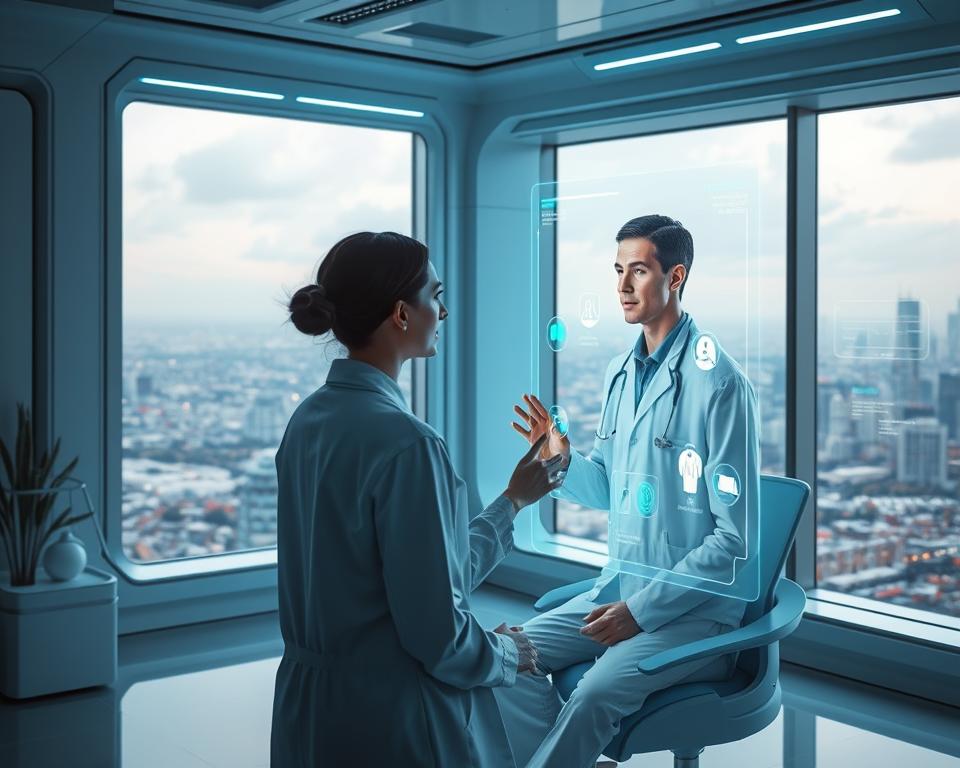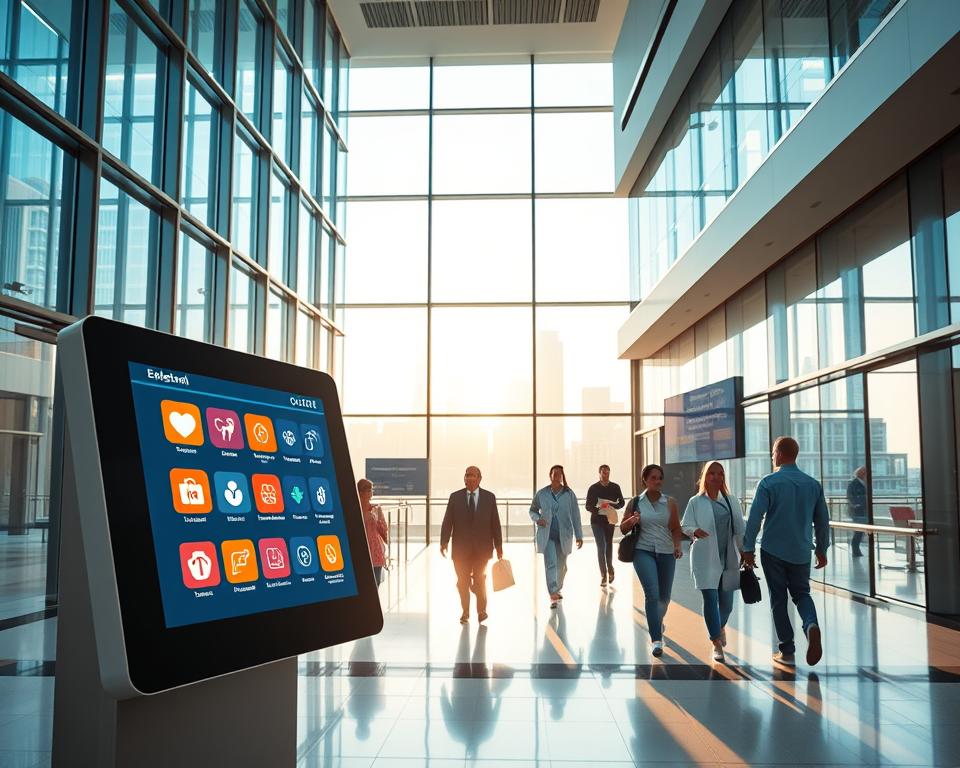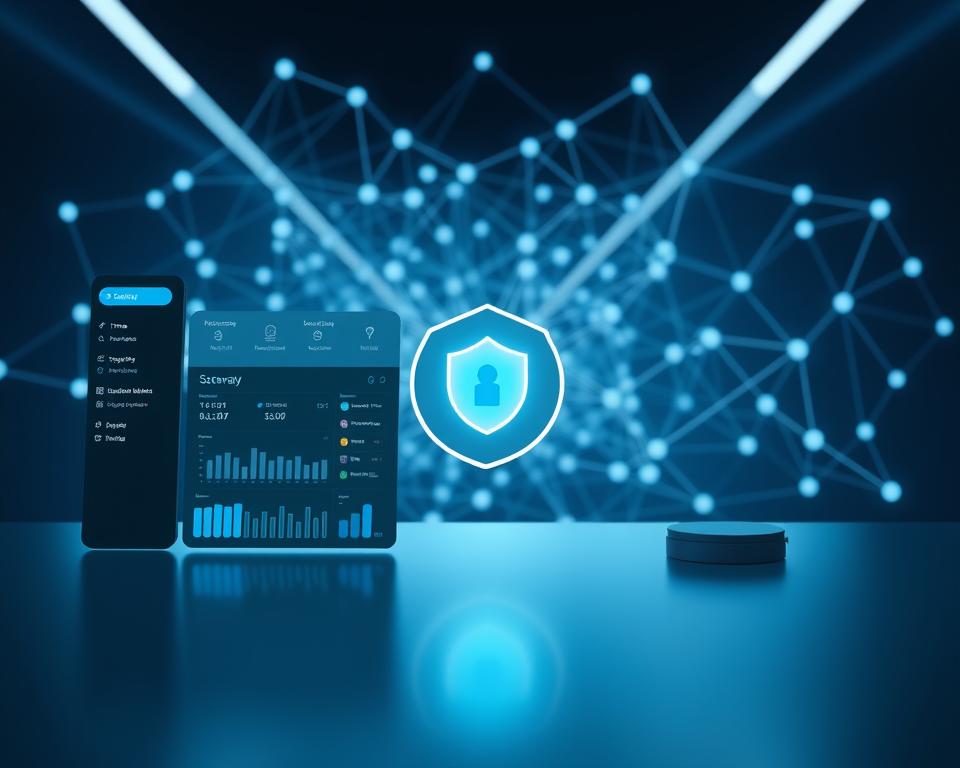Telehealth is changing fast, focusing on making medical apps safe and easy to use. These apps aim to change how we get healthcare from home. They make it easy for patients to talk to doctors and get help online. With more people wanting telehealth, making apps that are safe and easy to use is key.
As healthcare moves online, apps are becoming vital for both patients and doctors. They need to be secure and easy to use. This ensures patients get great care online and apps are safe and simple to use.
The future of telehealth depends on making apps that are safe and easy to use. These apps will help patients get the care they need online. They make healthcare better and more accessible.
Table of Contents
Introduction to Telehealth
Telehealth is now a big part of healthcare, with apps playing a key role. They give patients access to healthcare services. It’s important to focus on security, following rules, and making apps easy to use. This ensures telehealth and apps meet high standards of safety and quality.
Key Takeaways
- Telehealth is rapidly evolving, with a focus on developing secure and user-friendly medical consultation apps.
- Medical consultation apps require careful consideration of security, compliance, and user experience.
- The development of secure and user-friendly medical consultation apps is critical to the future of telehealth.
- Telehealth solutions must prioritize security, compliance, and user experience to ensure high-quality care.
- Medical consultation apps are becoming an essential tool for patients and healthcare providers alike, driving the need for secure healthcare solutions in telehealth.
- The healthcare industry must prioritize the development of secure and user-friendly medical consultation apps to enhance the healthcare experience.
The Evolution of Remote Healthcare Services
Remote healthcare services have changed a lot in recent years. This change is thanks to new technology and what patients need. Now, we see more digital healthcare options because of global health issues. These issues have shown us how important telehealth is.
Global health events have really changed how we use telehealth. Now, patients can see doctors from home. This means fewer visits to the doctor and less chance of getting sick. So, more people want digital health options like telehealth apps and mobile health apps.
Key Factors Driving Telehealth Adoption
- Increased access to healthcare services, particularly for rural or underserved communities
- Improved patient engagement and empowerment through digital health tools
- Enhanced convenience and flexibility, with remote consultations and virtual care options
As more people want remote healthcare, it’s key to know about medical apps now. Digital healthcare helps doctors give better care, saves money, and makes care better overall.
Essential Components of Modern Telehealth Platforms
Modern telehealth platforms need key parts to offer safe and easy-to-use medical apps. These parts are secure chat systems, electronic health records (EHRs), and billing systems. Making these platforms requires knowing a lot about healthcare technology and secure healthcare solutions.
These components help make telehealth platforms work well for both patients and doctors. Some important features include:
- Secure chat systems for remote talks
- Electronic health records (EHRs) for keeping patient info
- Billing systems for easy payments
Using healthcare technology and secure healthcare solutions, telehealth platforms offer top-notch care. They are getting more popular. Their development needs a deep understanding of the key parts that make them work.
Understanding HIPAA Compliance in Digital Healthcare
Creating secure and easy-to-use medical apps needs a good grasp of HIPAA compliance. The Health Insurance Portability and Accountability Act (HIPAA) has strict rules for patient data. Medical apps must follow these security requirements to protect patient data protection.
To meet HIPAA standards, apps must have strong security. This includes data encryption, secure login, and who can access what. It’s key to keep patient info safe and stop others from getting in. Apps also need to follow patient data protection standards. This means getting patient consent and telling them how data will be used.
- Conducting regular security risk assessments to identify vulnerabilities
- Implementing incident response plans to address data breaches
- Providing training to staff on HIPAA policies and procedures
- Maintaining accurate and up-to-date documentation of compliance efforts
By focusing on HIPAA compliance and patient data protection, developers make reliable medical apps. These apps meet patient and healthcare needs while keeping patient data safe.
Key Security Features for Medical Consultation Apps
Medical consultation apps are very important for keeping patient data safe. They are often targeted by cyber attacks because of this sensitive information. To keep patient data safe, these apps need strong security features.
Data encryption is a key feature. It keeps patient data safe when it’s being sent or stored.
Other important features include secure login, access controls, and regular security checks. Secure login makes sure only the right people can get into the app. Access controls limit what those people can do. Regular checks help find and fix any weak spots in the app’s security.
Medical apps also need to follow rules like HIPAA. Following these rules shows that the app is serious about keeping patient data safe. With strong security and rule-following, these apps can be both safe and easy to use for everyone involved.
Here are some good things about having strong security in medical apps:
- It keeps patient data safe from hackers and unauthorized access.
- It makes sure the app follows important rules and standards.
- It builds trust with patients and healthcare providers.
- It helps the app and its creators look good and trustworthy.
User Experience Design in Healthcare Applications
User experience design is key in making healthcare apps better. A good design can make patients more engaged, cut down on mistakes, and boost overall satisfaction. It’s important to follow user experience design rules to make interfaces easy and accessible.
Health apps need to work for everyone, no matter their age or abilities. Accessibility considerations are crucial to make sure all users can use the app well. This means making sure the app is easy to read, understand, and use.
Important things to think about in user experience design for healthcare apps include:
- Designing for different age groups
- Considering accessibility
- Improving navigation and workflow
By focusing on these areas, developers can make healthcare apps that are easy to use and safe. This improves the user experience design and healthcare applications for both patients and healthcare providers.
The Future of Telehealth: Developing Secure and User-Friendly Medical Consultation Solutions
The future of telehealth is changing fast. It’s all about making secure medical consultation solutions that keep patient data safe and are easy to use. As more people want telehealth, it’s key to make apps that let patients and doctors talk easily.
When making medical apps, keep these things in mind:
- Use strong security to protect patient info
- Make the app easy and simple to use
- Follow all the rules and laws
By focusing on safety, ease of use, and following the rules, developers can make great secure medical consultation solutions. These solutions will help patients and doctors, shaping the future of telehealth.
Integration with Existing Healthcare Systems
The healthcare world is changing fast. Now, linking up with current healthcare systems is key for telehealth apps. This makes sharing data smooth, cuts down on mistakes, and makes things better for everyone. The secret to success is EMR/EHR compatibility and healthcare provider management.
Important things to think about for linking up with healthcare systems include:
- Ensuring EMR/EHR compatibility to share patient data easily
- Setting up healthcare provider management systems to make things easier for providers
- Creating integration with healthcare systems that keep data safe and cut down on mistakes
By focusing on integration with healthcare systems, telehealth apps can offer a better experience for patients and doctors.
As healthcare keeps changing, the need for integration with healthcare systems will grow. By working on EMR/EHR compatibility and healthcare provider management, telehealth apps are key to the future of healthcare.
Benefits of integration with healthcare systems include:
- Better health outcomes
- More involved patients
- Healthcare providers work more efficiently
By using integration with healthcare systems, telehealth apps help make healthcare more connected and efficient.
Mobile Development Considerations for Medical Apps
When making medical apps for mobile, security is key. It’s important to know about security, data encryption, and access controls. Mobile development teams must make sure their apps follow rules like HIPAA to keep patient data safe.
Some important things to think about when making medical apps for mobile include:
- Using strong security like encryption and safe login
- Following rules like HIPAA
- Making the app easy for users to use
By focusing on security and following good mobile development practices, developers can make medical apps that are safe and easy to use. This is crucial for good patient care and keeping patient data safe.
Payment Processing and Insurance Integration
Telehealth apps rely on payment processing and insurance integration for smooth transactions. These features aim to make payments secure and easy for users. This is why healthcare technology keeps improving to fulfill these needs.
Secure payment gateways are vital for protecting patient data. In healthcare, data security is a top priority due to strict rules like HIPAA. Telehealth apps use these gateways to keep patient info safe and follow the law.
Important factors for payment and insurance integration include:
- Systems to check if patients have insurance and if they’re covered
- Tools to manage billing and cut down on mistakes
- Following rules like HIPAA to safeguard patient data
By focusing on payment and insurance integration, telehealth apps offer a better experience for patients. They also help healthcare providers save time and money. This move is crucial for a more efficient healthcare system that fits today’s digital world.
Artificial Intelligence in Telehealth Applications
Artificial intelligence is changing healthcare, especially in telehealth. It makes telehealth apps more personal, accurate, and engaging for patients. Machine learning helps analyze data to guide treatment plans.
Artificial intelligence in telehealth brings many benefits. These include:
- More accurate diagnoses thanks to machine learning
- Personalized experiences that engage patients
- Automated workflows that save time
As AI in telehealth grows, keeping patient data safe is key. AI and machine learning help deliver quality care while protecting patient information.
Real-time Communication Technologies
Real-time communication is key for telehealth apps. It lets patients and healthcare providers talk smoothly. This is done through real-time communication tech, which makes info sharing instant. For telehealth, video conferencing and secure messaging are vital.
When choosing real-time communication tech, consider a few things:
- Reliability and scalability for constant communication
- Security and healthcare rule compliance to keep patient data safe
- Usability and user experience for easy use and adoption
Telehealth apps with real-time communication tech offer a better experience. Video conferencing lets for face-to-face talks. Secure messaging keeps info private and safe. As telehealth grows, so will the need for these techs.
Data Analytics and Reporting Features
Data analytics and reporting are key in telehealth apps. They offer healthcare insights for better decision-making. Telehealth apps can track patient results, spot trends, and boost care quality. This is vital for telehealth solutions, helping tailor treatments and engage patients better.
Important aspects of data analytics and reporting in telehealth apps include:
- Tracking patient outcomes and treatment success
- Finding trends and patterns in patient data
- Offering reporting features for informed healthcare decisions
- Making sure data analytics are precise and trustworthy
Telehealth apps use data analytics and reporting features to offer healthcare insights. These insights help improve patient results and care quality. As telehealth grows, so will the need for these features.
Testing and Quality Assurance for Medical Apps
Medical apps need thorough testing and quality checks. This makes sure they are safe, work well, and easy to use. It helps find and fix problems before they cause issues.
Testing and quality assurance are key. They help developers make apps that are reliable and meet user needs.
Some important things to consider include:
- Security testing to keep patient data safe
- Performance testing to make sure the app works smoothly
- User acceptance testing to check if the app is easy to use
Security Testing Protocols
Security testing is vital for medical apps. It checks if the app’s security features work well. This includes data encryption and access controls.
Performance Testing Requirements
Performance testing is also crucial. It makes sure the app can handle different user actions and data without slowing down. It tests real-world scenarios to find and fix any problems.
Regulatory Compliance and Updates
Keeping up with regulatory compliance is key for telehealth apps. Healthcare regulations change often. To stay compliant, telehealth apps must follow strict rules, like those from the Health Insurance Portability and Accountability Act (HIPAA).
This includes strong security for patient data and keeping accurate records. It’s important to protect patient information and keep detailed records of all interactions.
Regular updates are vital to keep telehealth apps in line with healthcare regulations. This means updating software, changing workflows, and training healthcare staff. By focusing on regulatory compliance and keeping up with updates, telehealth apps can earn and keep the trust of patients and healthcare providers. This also helps avoid non-compliance issues.
Some important things to consider for regulatory compliance and updates are:
- Implementing strong security to protect patient data
- Keeping accurate records of all interactions
- Training healthcare professionals on regulatory compliance and updates
Implementation Strategies and Best Practices
When it comes to telehealth apps, implementation strategies are key for a smooth and safe user experience. By using best practices in development, healthcare providers can cut down on mistakes and boost care quality. Good deployment planning is vital for telehealth app success. It helps healthcare providers offer better services and improve patient results.
Some important things to think about for implementation strategies and best practices include:
- Doing detailed risk assessments to find security weak spots
- Creating solid training for staff to make sure they know how to use the app well
- Setting up upkeep plans to keep the app current and safe
By focusing on implementation strategies and best practices, healthcare providers can make sure their telehealth apps are safe and easy to use. This can lead to better patient results, happier patients, and lower healthcare costs. As the telehealth world grows, it’s crucial to keep up with new deployment planning strategies and best practices to stay ahead and offer top-notch care.
Conclusion
The future of telehealth looks bright, with more people wanting easy and safe ways to talk to doctors online. This article has shown that making good telehealth solutions means focusing on security, following rules, making it easy for users, and working with current healthcare systems.
Healthcare providers need to make sure their apps keep patient info safe and private. They should also make these apps easy for everyone to use. This way, people of all ages and backgrounds can easily use these online health services.
As telehealth grows, new tech like AI and live chat will make remote care better. It’s important for doctors, tech people, and lawmakers to work together. They need to solve problems and help more people use these secure medical consultation apps.
The success of telehealth depends on creating solutions that help everyone, no matter where they live or how much money they have. By using new tech and focusing on users, the healthcare world can change. We can make remote care better for everyone, especially those who need it most.







